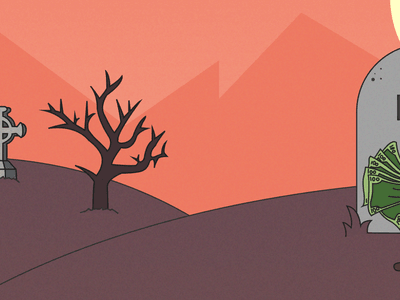Tailwise, a platform which helps would-be dog owners to find the right dog from responsible breeders, is the brainchild of Sam Worthy, who founded the business in 2017 following six years of hard graft and much soul searching. Here he offers some practical advice to taking the plunge and abandoning a regular salary to pursue one’s dream.
The sparks of Tailwise
The period post the 2009 recession was tumultuous for me, with some major life events which culminated in deciding to leave my job in property. I took some roles at startups which were all stepping stones to the ultimate goal of launching my own startup, and see me become a fully-fledged entrepreneur.
With limited technical experience my mission, having resigned, was all about doubling down on my experience of sales, fundraising and extending specific web domain knowledge. If you’re at this early point as an aspiring entrepreneur I would urge you to consider which skill set you will provide at your company; software developer, user experience (UX) designer, user interface (UI) expert, product designer, sales or hustle?
Of course, the real key to success is finding a business opportunity where you are:
- Solving a real problem
- In a niche you are passionate about
- Where the business economics stack up (and you can generate revenue)
I’ve always been a ‘dog-person’, so for me doing something in the world of dogs was a logical step. I realised that the dog buying process was completely outdated and fraught with risks and it soon became clear during the research process, that there’s a stark split between breeders who care and want the very best for their litters and, those unscrupulous people who exploit the emotive nature of buying a puppy to make a quick buck.
Finding a Cofounder
In my opinion if you want to build something successful you need support, which for me meant partnering with a developer or designer who had domain experience and shared my vision. So for three years I spent a lot of time meeting as many people as I could who I felt had complementary skills to my own.
After much ‘stalking’, I was introduced to Dan Baird (the best designer I know and someone who had a background at a dog startup) who would eventually become my co- founder. He had the skill set, our personalities matched and, most importantly, he had the passion for the opportunity. Together we spoke further with people in the dog world and confirmed that the problem we had set out to solve really was a problem, and so we set about creating the solution.
Side Hustle and Pulling the Ripcord
Dan and I worked during our spare time and at weekends for close to a year before finally leaving our full time jobs. By ‘side hustling’ (i.e. testing and researching the opportunity), we were able to de-risk the business before ultimately both taking the plunge and leaving to work on Tailwise full time.
Raising Funds
In October 2016 I started working full time on Tailwise. As CEO a key role of mine was to raise funds for the business, which thanks to (Seed) Enterprise Investment Scheme (SEIS / EIS) tax breaks and supportive friends and family should have been easy, but in reality it wasn’t.
Any aspiring entrepreneur needs to be prepared for almost everyone to say no and have some investors literally laugh in your face and offer you Dragon’s Den type deals. My advice would be to hold firm and believe in what you’re doing and take comfort in the fact that at this point investors are betting on the team and your vision.
Here are some quick suggestions which I won’t claim as my own but I absorbed by speaking with others within the tech industry:
- Be highly self-aware and allow yourself enough runway to raise funds (4-6 months is optimum 3 months is cutting it too fine)
- Remember that you don’t want to be closing a round of fund raising in August or early January when people tend to take holidays
- Make sure you have the following checked off:
- Employment agreements
- Intellectual Property agreements
- Legal team in place
- A presentation that succinctly describes your idea and business plan
We wanted to raise a pre-seed round as we’d been running on fumes for 6 months and it was beginning to become tough for us to get by. We decided that £200,000 (SEIS £150k and EIS £50K) would give us enough runway to validate our business. It then becomes a process of chipping away at your target investors and quickly establishing a lead investor. For every investor you meet you need to understand:
- How much they normally invest
- Any conditions attached to their investments
- Make sure you have a firm commitment (we had a few investors walk away after waiting for other investors’ opinions)
- Get an agreement in writing confirmed as soon as possible (there is a massive difference between a soft yes and a hard yes)
- Remember at the end of the day funding is a facilitator which gives you the opportunity to prove your business works. It 100% does not mean success
The future
At Tailwise we’re working with great breeders, using technology to radically improve animal welfare and provide transparency for the most important moment in a dog owner’s life – finding the right dog. Thankfully now having raised our funding from angels and early stage fund, Jensons Solutions, we’re now very excited about building our team out and gaining traction.
We have huge ambitions to build the most compelling pet company of the 21st century and to play a key role in ending puppy farming. Our goal now is focused on execution.


